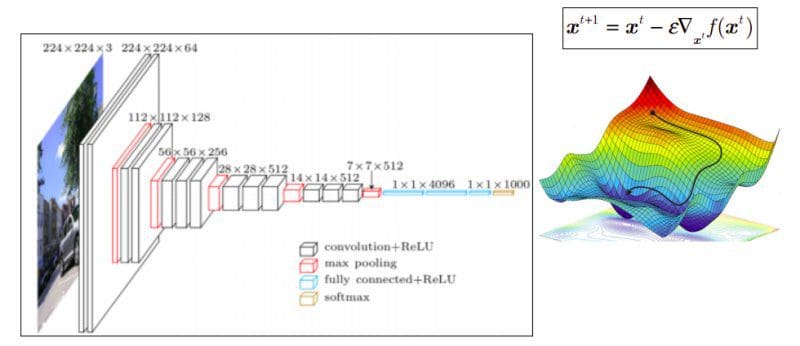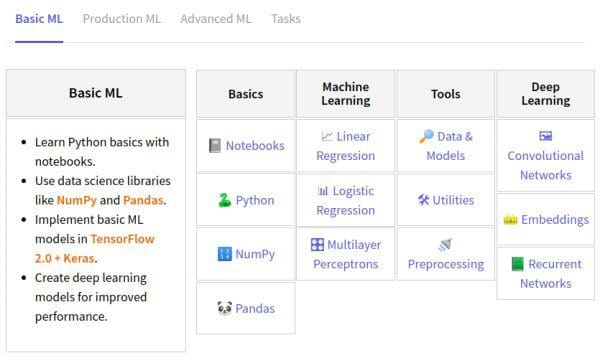 10 Free Top Notch Machine Learning Courses
10 Free Top Notch Machine Learning Courses
Are you interested in studying machine learning over the holidays? This collection of 10 free top notch courses will allow you to do just that, with something for every approach to improving your machine learning skills.
The holidays are upon us, and if you're looking for something to occupy some down time in between events with family, friends, and coworkers, why not do so with quality, free online courses?
This is a collection of free, quality online machine learning courses, from some esteemed universities as well as other online outlets. Whether you are looking for introductory or more advanced topics, theoretical or practical, or general or specified topics, the courses here should help scratch that year-end learning itch. Take a look at the courses below and get learning something new today.
Don't forget to check out the related posts at the bottom for more posts with free machine learning courses.
1. Machine Learning in Python
Springboard
Machine learning is one of the hottest new technologies to emerge in the last decade, transforming fields from consumer electronics and healthcare to retail. This has led to intense curiosity about the industry among many students and working professionals.
If you’re a tech professional—such as a software developer, business analyst, or even a product manager—you might be curious about how machine learning can change the way you work and take your career to the next level. However, as a busy professional, you’re probably also looking for a way to get a solid understanding of machine learning that’s not only rigorous and practical, but also concise and fast. This machine learning tutorial will help you achieve your goals.
2. Introduction to Machine Learning
University at Buffalo
Machine learning is an exciting topic about designing machines that can learn from examples. The course covers the necessary theory, principles and algorithms for machine learning. The methods are based on statistics and probability-- which have now become essential to designing systems exhibiting artificial intelligence.
Reference textbooks for different parts of the course are "Pattern Recognition and Machine Learning" by Chris Bishop (Springer 2006) and "Probabilistic Graphical Models" by Daphne Koller and Nir Friedman (MIT Press 2009) and "Deep Learning" by Goodfellow, Bengio and Courville (MIT Press 2016).
3. Practical AI: A practical approach to machine learning
practicalAI
4. A Machine Learning Course with Python
Machine Learning Mindset
Machine Learning, as a tool for Artificial Intelligence, is one of the most widely adopted scientific fields. A considerable amount of literature has been published on Machine Learning. The purpose of this project is to provide the most important aspects of Machine Learning by presenting a series of simple and yet comprehensive tutorials using Python. In this project, we built our tutorials using many different well-known Machine Learning frameworks such as Scikit-learn.
5. Machine Learning for Intelligent Systems
Cornell University
The field of machine learning is concerned with the question of how to construct computer programs that automatically improve with experience. Recently, many successful machine learning applications have been developed, ranging from data-mining programs that learn to detect fraudulent credit card transactions, to information-filtering systems that learn users' reading preferences, to autonomous vehicles that learn to drive. There have also been important advances in the theory and algorithms that form the foundation of this field. This course will provide a broad introduction to the field of machine learning. Prerequisites: CSE 241 and sufficient mathematical maturity (Matrix Algebra, probability theory / statistics, multivariate calculus). The instructor will hold a take-home placement exam (on basic mathematical knowledge) that is due on January 30th.
6. Deep Learning
University at Buffalo
Deep Learning algorithms learn multi-level representations of data, with each level explaining the data in a hierarchical manner. Such algorithms have been effective at uncovering underlying structure in data, e.g., features to discriminate between classes. They have been successful in many artificial intelligence problems including image classification, speech recognition and natural language processing. The course, which will be taught through lectures and projects, will cover the underlying theory, the range of applications to which it has been applied, and learning from very large data sets. The course will cover connectionist architectures commonly associated with deep learning, e.g., basic neural networks, convolutional neural networks and recurrent neural networks. Methods to train and optimize the architectures and methods to perform effective inference with them, will be the main focus. Students will be encouraged to use open source software libraries such as Tensorflow.
7. Deep Learning in Computer Vision
Ryerson University
Computer Vision is broadly defined as the study of recovering useful properties of the world from one or more images. In recent years, Deep Learning has emerged as a powerful tool for addressing computer vision tasks. This course will cover a range of foundational topics at the intersection of Deep Learning and Computer Vision.
8. Interpretability and Explainability in Machine Learning
Harvard University
As machine learning models are increasingly being employed to aid decision makers in high-stakes settings such as healthcare and criminal justice, it is important to ensure that the decision makers (end users) correctly understand and consequently trust the functionality of these models. This graduate level course aims to familiarize students with the recent advances in the emerging field of interpretable and explainable ML. In this course, we will review seminal position papers of the field, understand the notion of model interpretability and explainability, discuss in detail different classes of interpretable models (e.g., prototype based approaches, sparse linear models, rule based techniques, generalized additive models), post-hoc explanations (black-box explanations including counterfactual explanations and saliency maps), and explore the connections between interpretability and causality, debugging, and fairness. The course will also emphasize on various applications which can immensely benefit from model interpretability including criminal justice and healthcare.
Editor's note: course in progress at time of writing, not all resources available yet online.
9. Topics in Natural Language Processing
Ben-Gurion University of the Negev
The course is an introduction to Natural Language Processing. The main objective of the course is to learn how to develop practical computer systems capable of performing intelligent tasks on natural language: analyze, understand and generate written text. This task requires learning material from several fields: linguistics, machine learning and statistical analysis, and core natural language techniques.
10. Probabilistic Graphical Models Course
University at Buffalo
Probabilistic graphical models are graphical representations of probability distributions. Such models are versatile in representing complex probability distributions encountered in many scientific and engineering applications. They have now become essential to designing systems exhibiting advanced artificial intelligence, such as generative models for deep learning.
The course covers theory, principles and algorithms associated with probabilistic graphical models. Both directed graphical models (Bayesian networks) and undirected graphical models (Markov networks) are discussed covering representation, inference and learning.
Related:
- 10 Free Must-See Courses for Machine Learning and Data Science
- 10 More Must-See Free Courses for Machine Learning and Data Science
- Another 10 Free Must-See Courses for Machine Learning and Data Science

 10 Free Top Notch Machine Learning Courses
10 Free Top Notch Machine Learning Courses
